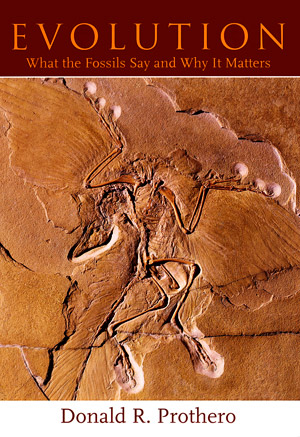One of the strangest aspects of “creation science” is their attempt to reconcile the fact that there are between 5-15 million species on earth, yet somehow they all had to fit on Noah’s ark (one pair or seven pairs of them, depending upon which version of the story you read). Such an idea might have made sense to the ancient Hebrews, who only knew of a few dozen kinds of larger mammals in the ancient Middle East, and did not make distinctions between most types of insects or other invertebrates (just as most people today call almost all insects, arachnids, and other small land arthropods “bugs”), let alone recognize the existence of microorganisms. But the modern-day “creation scientist” must be a strict literalist, and cannot take these ancient stories in the context of their times. Instead, these myths must be literally true in today’s context, and then whatever modern science has revealed in the past few centuries must be re-interpreted or discredited or ignored. It’s one of the most astounding examples of motivated reasoning, reduction of cognitive dissonance, cherry-picking, and confirmation bias one could imagine. In the case of shoehorning all of life into tiny Noah’s ark, they even have invented a name for it (“baraminology”). Quite a few creationists play at this pointless game of sophistry, arguing how many angels could dance on the head of a pin.
Let’s start with the term baramin itself. It was created out of nothing by Seventh-Day Adventist Frank Marsh in 1941 by tacking two words together from a Hebrew glossary (bara ”created”; min, ”kind”) without any idea how Hebrew actually works. Since almost none of the creationists read the Old Testament in the original Hebrew (or they would spot the problems and inconsistencies that make literal interpretation absurd), they don’t realize how ridiculous this term is, and why it doesn’t mean what they think it means. As I learned when I studied Hebrew, the Semitic root “B-R-A” (vowel points were not invented until centuries later) is translated “he created” or “he conjured,” so it is a past-tense verb, not a past participle of a verb, as Marsh used it. And min can be used to mean not only a “kind” but also a species, or even a sex. Slapped together as Marsh did it, the object min replaces the original subject Elohim (one of the names for the gods), so literally translated, baramin means “the species created”, not “god created”—and certainly not “created kinds” in any sense the scriptures use. If Marsh had known any Hebrew and wanted to create a grammatically correct translation of “created kind”, it would have been min baru (past participle). But given the consistently sloppy scholarship of creationists, I would never expect them to get this part right.
Leaving aside their ignorance of Hebrew, the whole topic of “baraminology” reminds one of a laughably poor imitation of science—science as imagined by kids at play, or amateurs who are parroting the forms without understanding any of the principles or protocols or implications of the actual research, or the silly imitation of science in the movies and TV where they spout sciency-sounding words that make no sense whatsoever. The focus of their “research” is to skim over the entire field of modern animal classification and then imagine ways to shoehorn hundreds of individual species and genera into the smallest possible number of categories. They don’t bother to work with actual animals, or get their hands dirty with the dissections and anatomical work that established the modern taxonomy of organisms, or spend the years in graduate school to obtain the kind of training necessary to understand and analyze molecular phylogenetic data, or wade into the gigantic literature of modern systematic theory since the days of Simpson and Mayr and cladistics. No, that would require that they be trained in actual science, and confront the evidence for evolution that runs throughout life. Instead, they do superficial, high-school level “book-report” types of analyses, where they cherry-pick ideas here and there from highly simplified internet sources and Wikipedia articles. They know just enough science to pick up a stray factoid here and there without any understanding of the caveats and methods behind the data, or the relative significance or importance of one kind of data versus another that only comes with years of graduate study in a field.
So what are the methods of “baraminology”? In a nutshell, they are wildly inconsistent. A baramin might correspond to what a real biologist recognizes as a species, a genus, an order, a family, or even an entire phylum (Siegler, 1978; Ward, 1965)! In some cases, they mimic the methods of phenetic taxonomy and look for overall similarity; in others, they ape the terminology of cladistics with such odd terms as “holobaramin”, which has no rigorously-defined meaning whatsoever (since it is based on a concept with no consistent basis or meaning). Unlike real systematists, “baraminologists” don’t work with actual specimens or enumerate real anatomical characters, or analyze their own molecular sequences, or use rigorous methods of character analysis and computerized methods of determining parsimonious solutions. Instead, if this recent effort by veterinarian and “independent scholar” Jean K. Lightner (NOT a systematic biologist) is any indication, it consists largely of looking at images of the animals on the web and deciding by a glance at single photograph which ones rate their own baramin and which ones don’t. Indeed, one “baraminologist” said so in no uncertain terms: “The cognita are not based on explicit or implicit comparisons of characters or biometric distance measures but on the gestalt of the plants and the classification response it elicits in humans.” They remind one of what Humpty Dumpty told Alice (in Through the Looking Glass), “Whenever I use a word, it means just what I choose it to mean.”
Lightner’s article is particularly revealing. She is trying the reduce the thousands of species of mammals alive today into the smallest number that can fit on Noah’s ark, and ends up with 137 baramin: some are families, some are genera, some are species and others are whole orders within the class Mammalia. She clusters all pigs and peccaries and hippos in one baramin, but splits up the many families of possums and other Australian marsupials into separate baramin. All cats, from tiny ocelots to giant tigers, are one baramin; so too are all canids, from tiny foxes to big wolves. She occasionally quotes parts of recent molecular studies (particularly in the case of hybridization) to lump or separate baramin, but completely ignores the overwhelming evidence from those same molecular studies of the interrelatedness of the taxa involved. In a nutshell, she cherry-picks what makes animals look different today, and avoids anything that might suggest they are closely related to each other. This is like looking at the terminal branches of a tree and trying to find their distinctiveness today, but failing to notice the fact that they are connected the further down you go, and they all come from a common trunk. Her article explicitly avoids talking about ANY fossil evidence (except in the case of horses, which even creationists cannot ignore). But it is precisely that evidence that confirms what anatomical and molecular data have long demonstrated: everything converges to common ancestor if you go back far enough. As I demonstrated in my book Evolution: What the Fossils Say and Why it Matters, you can trace many such terminal branches of the tree of life down to common ancestors that cannot be distinguished. For example (pp. 304-306), those same horses that creationists are so happy to lump into one “kind” can be traced back to primitive dog-sized four- and three-toed ancestors which are nearly identical to the earliest rhinos and earliest tapirs. These are separate baramin according to Lightner, but if she bothered to look closely at these Eocene fossils, she could not tell which baramin they belonged to. In my book, I provide many other examples of lineages which can be traced down to ancestors that are nearly indistinguishable, such as whales and their anthracothere ancestors, the different lineages of antelopes and giraffes and pronghorns, the elephants and the manatees, the pinnipeds (seals, sea lions, and walruses) and their bear-like relatives, and so on. Clearly, if you ignore 99% of the evidence and cherry-pick the most recent members of diverging lineages, you will not see the evidence of evolution in every part of their biology, anatomy, fossil record, and molecular sequences.
Even more startling is the fact that creationists will shoehorn ALL of horse evolution into one baramin! If a creationist saw an early Eocene horse like Protorohippus(formerly “eohippus”) without knowing its connection to modern horses, they would NEVER consider it to be related to a horse. This is virtually all of evolution right there, a concession that evolution on even the largest scale is real. Their only difference with real scientists is that horses are separate from tapirs and rhinos as different kinds, yet the fossil evidence demonstrates even that “macroevolutionary” transition that they refuse to admit.

A plushie version of a pseudocheirid possum from Australia, originally displayed on a website selling plushies but mistaken for the real animal by creationists and posted as such in their article about “baramin”
References
- Siegler, H.R. 1978. A creationist’s taxonomy. Creation Research Society Quarterly 15:36–38.
- Ward, R.R. 1965. In the Beginning. Grand Rapids, MI: Baker Book House.

